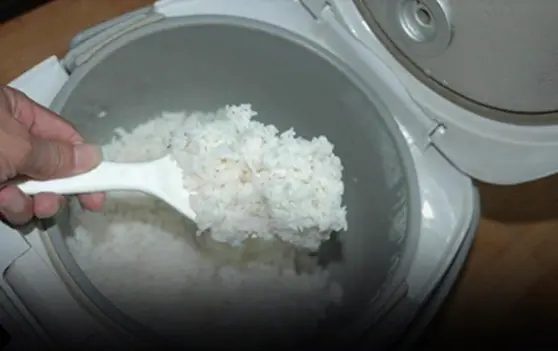
The 3 most toxic pork parts in the market, no matter how cheap, don't buy them or you'll get sick

Behind Cheap Pork Lies a Hidden “Health Trap”
At morning markets, stalls selling cheap pork are often crowded with buyers. Many people believe that as long as the meat is well-cooked, it’s safe to eat. But the truth is, there are certain parts of the pig — no matter how cheap — that should never be eaten. Beneath that bargain price may lurk bacteria, toxins, and parasites invisible to the naked eye. This is no longer a matter of “a mild stomachache after eating,” but a potential long-term threat to the liver, kidneys, and even life itself.
Pig’s Head – A Breeding Ground for Germs and Parasites
The head, including the cheeks, snout, tongue, and ears, is popular among street vendors for being cheap, easy to prepare, and rich in fat. However, it’s also one of the most contaminated parts of the animal. During slaughter, pig heads often come into direct contact with the floor, wastewater, and unsterilized tools. Bacteria can easily enter through wounds, nasal discharge, or saliva.
Moreover, the head contains numerous lymph nodes — the body’s natural filtration organs. When a pig falls ill or consumes contaminated feed, these nodes accumulate bacteria, toxins, and parasites. Even with thorough washing or cooking, not all pathogens are destroyed. Frequent consumption can lead to digestive issues, poisoning, or chronic intestinal infections.
Consumers should always be cautious of cheap pork cuts sold in open markets and avoid meat with unknown origins.
Pig Liver – The “Toxin Filter” Loaded with Residues
The liver is the pig’s primary detoxifying organ, which means it’s also the place where heavy metals, antibiotics, and growth hormones accumulate. In industrial farming, pigs are often given medications to prevent disease and promote rapid growth, leaving behind chemical residues stored in the liver.
Ironically, the fresh-looking, glossy liver may be the most dangerous. If the pig was sick, the liver might carry viruses, bacteria, or mycotoxins from contaminated feed. Once consumed, these toxins can trigger acute poisoning and overload the human liver, forcing it to work excessively hard.
Many people eat liver believing it’s nutritious and blood-enriching, but if not carefully selected, it becomes a double-edged sword. Warning signs include a dark purple color, slimy surface, or strong, fishy odor. No matter how cheap, such liver should never make it to your kitchen.
Intestines and Stomach – Bacterial Hotspots if Not Cleaned Properly
Another common offering at markets is pig offal — intestines, stomach, small and large bowels. These organs naturally store food waste and bacteria. If not cleaned and disinfected thoroughly, microorganisms multiply rapidly, especially in warm, humid environments.
Some vendors, aiming to save time, only rinse the organs briefly in saltwater before boiling. While the intestines may look clean and smell fine, inside they can still harbor intestinal bacteria, tapeworms, and parasites. Eating improperly cleaned offal can lead to digestive disorders, diarrhea, and long-term parasitic infections.
In general, organ meats should only be eaten if they come from certified, traceable sources, are stored cold, and processed hygienically. Buying unregulated, “rescued,” or suspiciously cheap products is an open invitation for health risks.
“Cheap” Often Means “Spoiled”
In many cases, dishonest vendors mix old or spoiled meat with fresh cuts and sell them at the same price. Some even use chemicals to restore color, remove odor, or retain moisture, making the meat look deceptively appealing. While it may fool the eye, it’s often laden with unsafe levels of chemical residue.
Consumers often think “cooking kills everything,” but many toxins and bacteria are heat-resistant, surviving standard cooking temperatures. Over time, these substances can damage the stomach lining, liver, and kidneys, increasing the risk of chronic inflammation and cancer.
A few thousand dong saved on a cheap cut is never worth the price of your health. Fresh pork should have a bright pink color, springy texture, no water leakage, and no strange odor. Spoiled meat, even if treated with chemicals, will still smell slightly sour or musty when close.
Eat Smart, Stay Safe
The most important rule for consumers is to pause when a deal seems too good to be true. Instead of stocking up on cheap meat, buy smaller quantities of high-quality pork from trusted, certified sources. When preparing, wash with diluted saltwater, cook thoroughly, and avoid undercooked or charred meat.
For the three risky parts — head, liver, and offal — think twice before purchasing. They may be flavorful, affordable, and tempting, but behind them lies a chain of invisible health hazards. A delicious meal only truly satisfies when it’s safe to eat.
Final Thoughts
Pork is a staple and nutritious food, but not every part is safe. In today’s market of unregulated supply chains, the habit of chasing low prices can become a loophole that endangers health. Don’t let familiar dishes turn into silent threats to your body. Be cautious when buying, discerning when choosing, and responsible when cooking — it’s the simplest way to protect your family from the “hidden toxins” in every piece of meat.
News in the same category


Follow this tip and your fish will stay fresh without losing its nutrients

What Happens to People Who Regularly Eat Sweet Potatoes for Breakfast Over a Long Period of Time?

Bathroom and toilet doors should be closed or open

Snakes are very af.raid of these 2 types of flowers

Everyone needs to pay attention when reheating cold rice

Simple tips to clean yellow sweat stains on white shirts

Tips to Keep Ginger Fresh All Year Without Sprouting — Fragrant and Firm Like New

Add One Small Step to Keep It Fresh and Sweet for a Whole Year

Put 1 Glass of Salt in a Car: Surprising Hack Every Driver Needs to Know

6 Indoor Spots Where You Should Never Install Security Cameras

After 30 years of using a microwave, I finally discovered this “magic button”

Waking Up Between 3 And 5 AM Could Indicate a Spiritual Awakening

Today I Learned How to Properly Use the Detergent Drawer in a Washing Machine – No Wonder My Clothes Weren’t Getting Clean

The washing machine accumulates a lot of dirt and bacteria

Put the phone down on the table, why you should put the screen face down: Know the reason no one wants to do the opposite

The water heater has a "hidden switch". If you open it, it can last for 10 years and is durable without worrying about wasting electricity

Grandparents’ Advice: Keep These 5 Things Out of Your Home or Misfortune Will Follow

Too many geckos in the house, here's a little trick to make them 'go away and never come back
News Post

Why are the toilets on the train connected directly to the tracks?

11 Sneaky Signs You Might Actually Be Gluten Intolerant

Unlock the secret to choosing perfectly tender, flavorful eggplants — fresh, safe, and free from preservatives!

How Often Do You Really Need to Shower, According to Science

Doctors warn that if you have these signs on your nails, you need to be careful with 5 types of diseases. You should see a doctor as soon as possible.

Understanding the Signals: What Your Body Is Trying to Tell You

My Father’s Last Ride: The Day I Realized I Was Wrong About Everything

3 Types of Fish Considered the “Best in the World”

These Bikers Kidnapped My Twins And I Begged Them Not To Bring Them Back

Beware Of Diabetes If You Frequently Experience These 5 Strange Symptoms

4 Fruits Known as the “Enemies” of Can.cer

Follow this tip and your fish will stay fresh without losing its nutrients

A Biker Showed Up At My Wife’s Grave Every Week And I Had No Idea Who He Was

Doctors say there are 5 symptoms after meals

What Happens to People Who Regularly Eat Sweet Potatoes for Breakfast Over a Long Period of Time?

Bathroom and toilet doors should be closed or open

The Golden Treasures of the Deep: Three Fish Revered as “Golden Soft-Gold Underwater”

11 Signs Your Body Is Giving You Important Alerts
